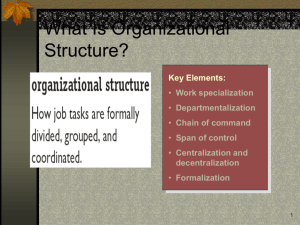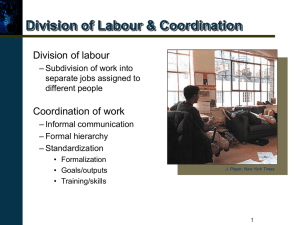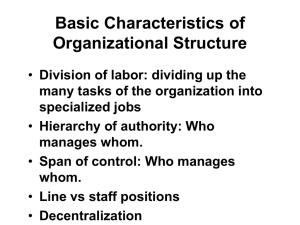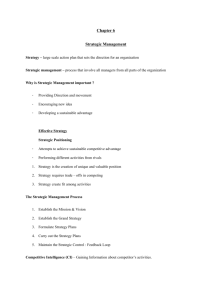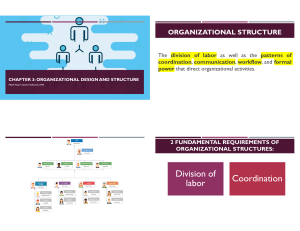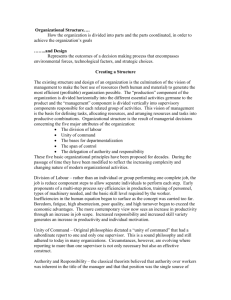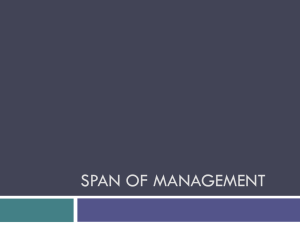Nature of Organizations
advertisement
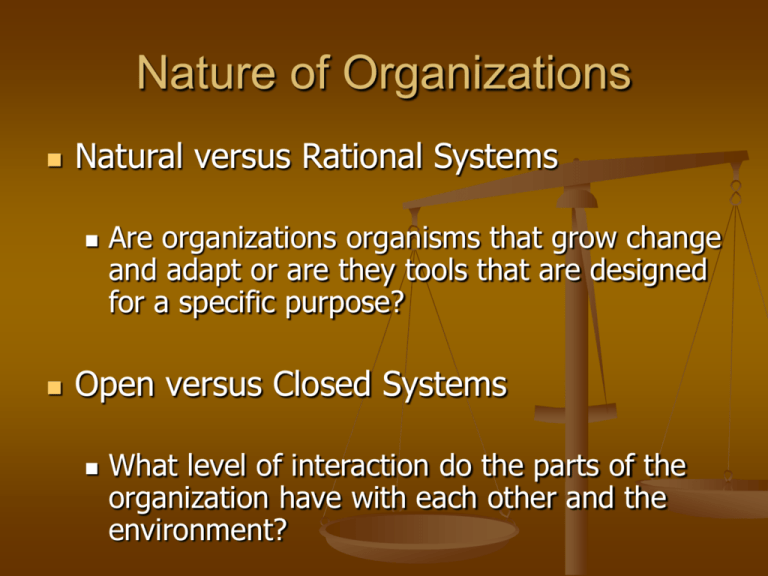
Nature of Organizations Natural versus Rational Systems Are organizations organisms that grow change and adapt or are they tools that are designed for a specific purpose? Open versus Closed Systems What level of interaction do the parts of the organization have with each other and the environment? Rational Systems Organizations as tools that are controlled as purposeful and coordinated agents for the principal Rational calculation Goal Specificity Formalized planning Translation of plans into specific objectives Formalization of structure Explicit and visible Division of labor Natural Systems Organizations as natural organisms that exist within an environment Goal complexity Informal structure Irrationality leads to informal norms and behaviors Functional analysis of organizations Population ecology Closed Systems One or few points of contact with the environment No change of system No intake of energy, material, or information Open Systems Connection of many parts that make up the organization Multiple or many points of interaction with the environment Self-maintenance Goal directed Reciprocal ties that bind and relate the organization to the environment Environment is ultimate source for materials energy and information Natural Rational Examples Schools Prisons Franchises Boarding schools Police Departments Military schools Social clubs Hmmmmm? Universities Corporations Governments Open Closed Options of Organizational Design Complex, Dynamic Network Design Environmental Forces Multinational Design Simple, Stable Matrix Design Product Design Place Design Functional Design Simple Technological Forces Chapter 16: Organization Design Complex 7 Division of Labor and Coordination Division of labor Subdivision of work into separate jobs assigned to different people Coordination of work activities informal communication formal hierarchy standardization Span of Control Number of people directly reporting to the next level Assumes coordination through direct supervision Wider span of control possible when: other coordinating mechanisms exist people do similar tasks tasks are routine Flatter structures require narrow span (if same # of people) Mechanistic vs. Organic Structures Mechanistic Organic • High formalization • Low formalization • Narrow span of control • Wide span of control • High centralization • Low centralization Variables That Differentiate Between Mechanistic and Organic Systems Hierarchy of authority Centralization Division of labor Rules Procedures Impersonality Chain of command Unity of command Span of control Chapter 16: Organization Design 11 Callaway Golf’s Design by Function and Process President New Products Manufacturing Planning Finance Functions Forging Assembly Quality Control Shipping Processes Source: Adapted from Callaway Golf 1996 Annual Report. Carlsbad, Calif., 1997. Chapter 16: Organization Design 12 Practical Implications of a Functional Design Clear identification of responsibilities. May be effective when company has a narrow product line, competes in a uniform environment, pursues a low-cost or focused business strategy, and does not serve different regions and customers. Specialized staff departments enable firm to deal more effectively with environmental complexity and dynamism. Most employees may lose sight of need to meet or exceed customer expectations. Chapter 16: Organization Design 13 Practical Implications of a Place Design Promotes direct contact among different organizational units and stakeholders demands. Lower costs. Marketing tactics can be tailored to regions. Control and coordination problems increase. Employees may overemphasize own unit’s goals and needs. Chapter 16: Organization Design 14 United Technologies CEO Pratt & Whitney * Jet engines * Rocket engines * Industrial gas turbines Carrier Otis * Heating & air conditioning * Building controls * Refrigeration equipment * Elevators * Escalators * Moving walks UT Automotive Flight Systems * Automotive electrical systems * Electric motors * Automotive interior & exterior trim * Helicopters * Propellers * Space life support systems Source: http://www.utc.com/Annual98/glance.htm. Chapter 16: Organization Design 15 Practical Implications of a Product Design Reduces information overload The addition of product lines, diverse customers, and technological advances increases the complexity and uncertainty. Incorporates features of functional design. Eases problems of integration by focusing functional expertise and knowledge on specific goods or services. Higher costs result from duplication of various functions. Chapter 16: Organization Design 16 Practical Implications of a Multidivisional Design Eases problems of integration by focusing functional expertise and knowledge on specific goods or services. Higher costs result from duplication of various functions. Chapter 16: Organization Design 17 Partial Illustration of Basic Matrix Design President and Chief Executive Officer Manager, Personnel Quality Control Engineer for Product Line A Manager, Product Line A* Manager, Production Quality Control Engineer for Product Line B Manager, Product Line B* Manager, Finance and Accounting Quality Control Engineer for Product Line C Manager, Product Line C* * These product managers also have full responsibility for the marketing activities associated with their own product lines. Chapter 16: Organization Design 18 Practical Implications of a Matrix Design Enables employees to be highly responsive to dual concerns. Enables firm to deal with uncertain environment and technologies. Enables firm to deal effectively with multiple products and limited resources. Uses people flexibly. Demands substantial managerial resources while employees learn to operate in the new organization. Learning may be a lengthy process because of required attitude changes. Special training programs may be needed. Makes specialized knowledge available to all projects. Chapter 16: Organization Design 19 Implications of a Multinational Design Worldwide product-line divisions will be more dominant than geographically based divisions under certain conditions. A worldwide product-line division may not be as effective at opening up new territories as a geographically organized division. A division operating under a place design often can establish relations with host governments, invest in Chapter 16: Organization Design 20 Key Elements of a Network Design Distinctive competence Responsibility Goal setting Communication Information technology Organizational culture Balanced view Chapter 16: Organization Design 21 Network Organizational Structure Product Development Firm (France) Marketing Firm (U.K.) Core Firm (U.S.A.) Customer Service Firm (U.S.A.) Production Firm (China) Accounting Firm (U.S.A.)

